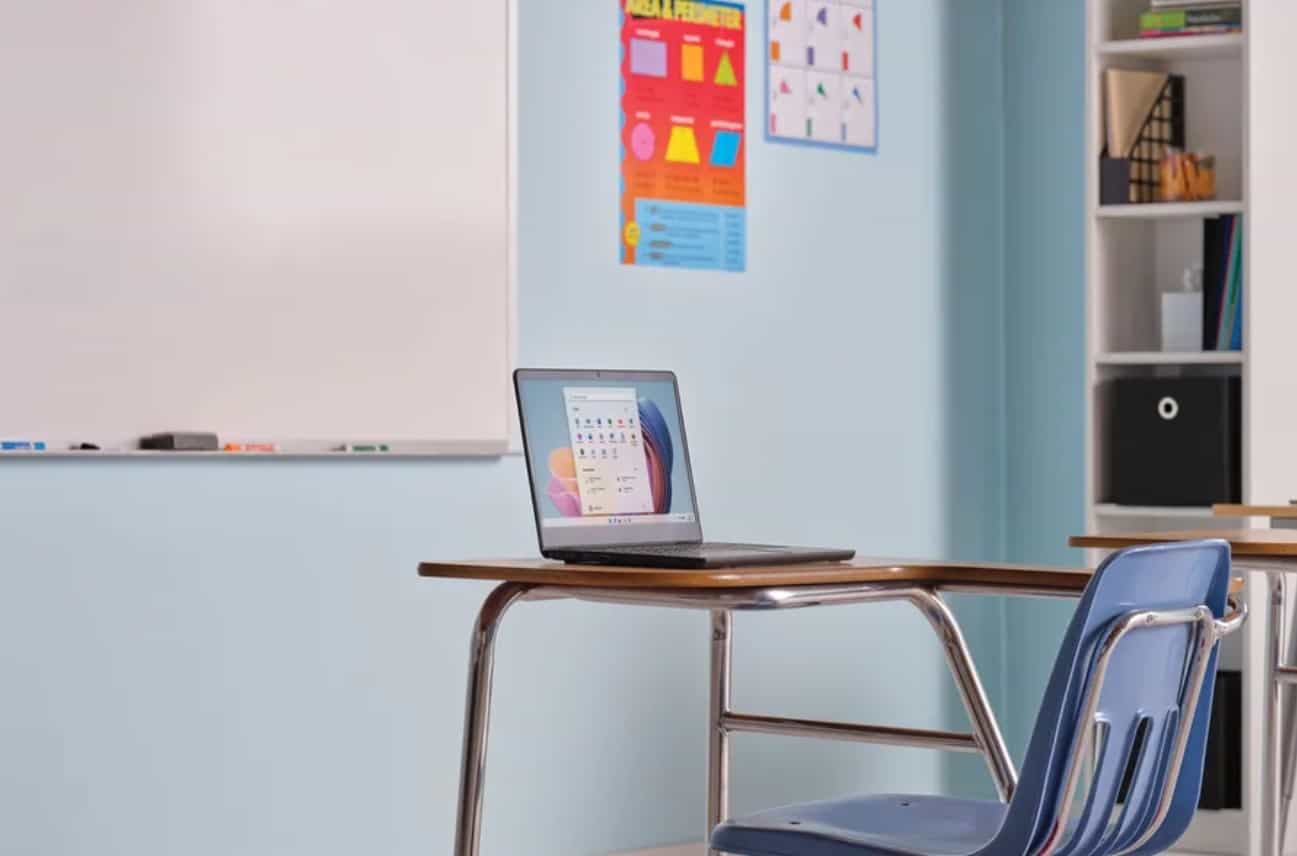Microsoft’s Chrome OS competitor, Windows 11 SE, is making its way onto a handful of laptops. After detailing Windows 11 SE in November, Microsoft’s OEM partners are now starting to make devices available globally for schools and students. Acer, Asus, Dell, Dynabook, Lenovo, HP, and JP.IK have all created Windows 11 SE laptops, with devices from Fujitsu and Positivo arriving later this year.
Windows 11 SE will only be available on new low-cost devices and only for schools and education customers. It’s designed to really take on Chromebooks in education, and is optimized for Microsoft Edge, Office, and Microsoft’s cloud-based services. Windows 11 SE isn’t limited to just Microsoft apps though, with both Zoom and Chrome part of an authorized selection of apps that IT admins can install. Microsoft has also simplified Windows 11 SE so apps always run fullscreen, multitasking using Snap Layouts has been reduced to side-by-side only, and the Widgets section has been removed.
In terms of hardware, a variety of laptops will be available in the coming weeks. Most OEMs seem to be repurposing existing low-cost devices to ship with Windows 11 SE preinstalled. Acer is updating its existing TravelMate Spin B3 laptop with Windows 11 SE. The 11.6-inch device includes shock-absorbent bumpers to protect against drops and even drainage nearly the keyboard for spillages. Intel Pentium Silver or Celeron processors will power the TravelMate Spin B3, which are fairly common processor choices among Windows 11 SE laptops.
Asus has its own wonderfully named BR1100F laptop that includes a 360-degree hinge, a touchscreen display with stylus support, and a rubber bumper and spill-resistant keyboard. Dell has opted for an 11-inch display on its Latitude 3120 laptops, with a quick charging feature that lets owners get around 80 percent charge in an hour. That’s useful in schools where trying to keep devices charged is half the struggle with laptops.
Dynabook (known previously as Toshiba) is shipping Windows 11 SE on its existing E10 laptop series, with an 11.6-inch HD display, Intel Celeron processors, and solid stage storage. The keyboard is spill-resistant and this compact laptop is designed to easily fit inside backpacks.
HP’s new ProBook Fortis 14-inch G9 Notebook is one of the only Windows 11 SE laptops with a larger display. The 14-inch device includes an Intel Celeron processor, 4GB RAM, and 128GB SSD. HP also has a smaller 11-inch Pro x360 model that’s powered by Windows 11 SE.
JP IK’s Windows 11 SE laptop starts at just $219. The Leap T304 has an 11.6-inch (1366 x 768) display, 4GB of RAM, 128GB SSD, and even a rotatable 2-megapixel webcam. Lenovo is also repurposing its existing 100w, 300w, 500w, and 14w laptops with Windows 11 SE.
“Our partners are building a broad portfolio of Windows 11 SE devices that are now starting to become available globally,” says Nicole Dezen, corporate vice president of device partner sales at Microsoft. “There are many more Windows 11 SE devices coming this year, including releases from Fujitsu and Positivo.”
Microsoft has also created its own $249 Surface Laptop SE, the company’s first true Chromebook competitor. The Surface Laptop SE will be sold exclusively to schools and students when it’s available early this year.

